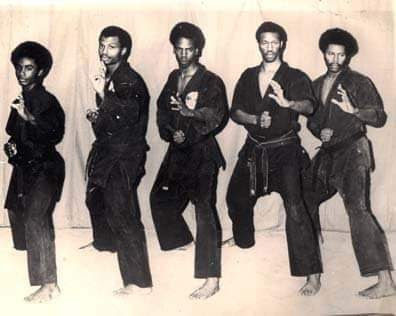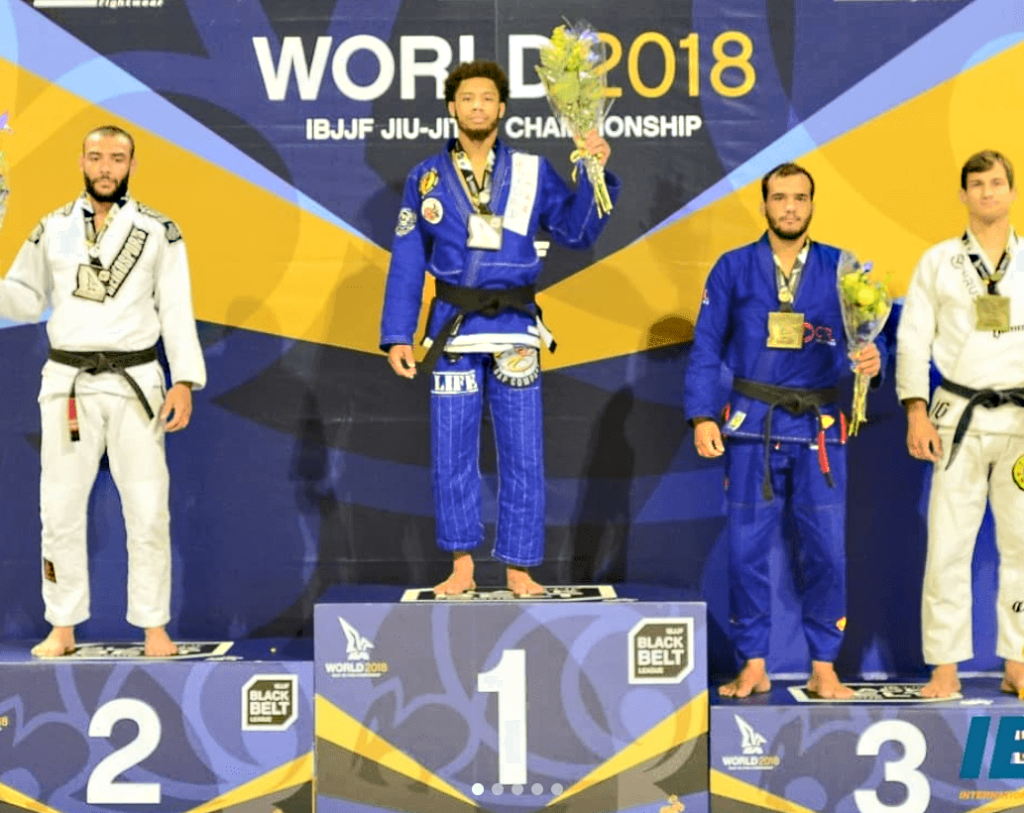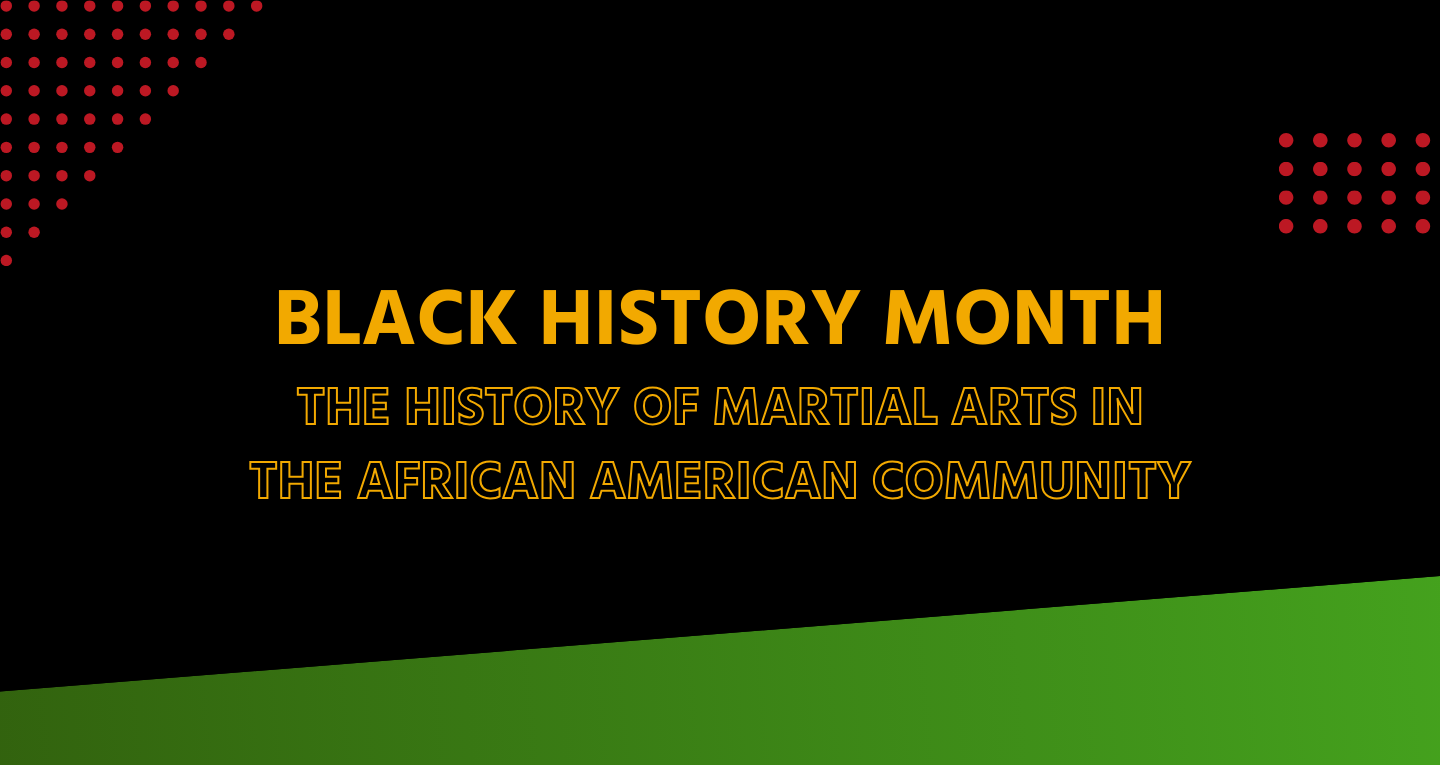Black History Month: Martial Arts in the African American Community
As we celebrate Black History Month in February, it’s important to look at history through all cultural angles. That includes those of us working in or participating in martial arts, as it’s not a frequently discussed aspect of Black History Month. When we look at mainstream martial arts and combat sports today, you can see the indelible stamp the African American and African communities have made over time.
Throughout history, boxers like Jack Johnson, Sugar Ray Robinson, and Muhammad Ali were some of the first African Americans fighters to become household names. That list has drastically expanded in recent years with Black fighters dominating in boxing, MMA, UFC, etc., cementing their place in the combat fighting landscape.
The Emergence of Martial Arts in the African American Community
Two historical events had a particularly strong influence on the growth of martial arts in the African American community: World War II and the Black Power movement. American soldiers returning from overseas during World War II came back to the States with a greater knowledge of martial arts like Karate and Judo. This led to a boom in martial arts training for African Americans thanks to veterans bringing back these lessons and spreading them to their communities.
After service members helped to build and establish that initial interest in martial arts, the Black Power Era movement in the 1960s and 1970s further expanded the impact. With the swelling resistance to racism and segregation, more and more individuals in the Black community dove into the world of martial arts as a means of self-defense and safety as tensions rose around them.
Growth Through Media
Martial arts’ overall growth in the United States was deeply influenced by Bruce’s Lee profound effect on Hollywood. That was especially true within the African American community, as they witnessed a person of color shining on the big screen. But it wasn’t just Lee who became a dual threat as an influential figure in show business and martial arts.
Jim Kelly starred alongside Lee in “Enter the Dragon” and became the first Black martial arts film star. He also starred in other films including “Black Belt Jones”, “Three the Hard Way”, and “Black Samurai”. Before he pivoted to a career in the film industry, Jim was an excellent and established martial artist. Most notably, he won four different Karate championships in 1971, including the World Middleweight Karate title at the Long Beach International Karate Championships. He also opened his own dojo in Los Angeles, which became a hotspot for celebrities and helped lead him on his journey to Hollywood.
You can read more about Jim Kelly and his cultural impact in our previous profile of the icon found HERE.

New Foundational Developments
Alongside the Black Power movement in the late 1960s came the creation of the Black Karate Federation (BKF) in 1969. The BFK was created by Grandmaster Steve Muhammad along with seven other martial artists in Los Angeles.
Possibly the most notable development from the BKF was the logo. The logo – featuring a cobra, fist, and the colors red, black, and green – was used to acknowledge the Black Power movement as well as their African roots. Muhammad and BKF co-founder Donnie Williams even appeared in a scene in Bruce Lee’s “Enter the Dragon” where they’re shown teaching a class with their logo in the background.
In addition to the creation of the Black Karate Federation, a new martial arts discipline was also created in the 1960s – Kupigana Ngumi. Formally established in Chicago by
Nganga Tolo-Naa, the style’s name means “way of fighting with fist” and encompasses various African fighting styles while also focusing on holistic refinement of mind, body, and soul. Intended to speak more directly to and motivate black youth at the time, the goal of Kupigana Nguimi was to integrate East Asian movement with modern cultural messages and deep lessons of African history.

Today’s Impact, Reach, and Influence
Today, Black fighters have greatly risen to the top in combat sports. Fierce and decorated competitors like Jon Jones, Floyd Mayweather, Israel Adesanya, and many more have become the iconic fighters of this generation.
That history is still being made. In 2018, Shane Jamil Hill-Taylor became the first African American International Brazilian Jiu-Jitsu Federation (IBJJF) black belt world champion. Even more impressive, Hill-Taylor achieved this milestone at just 20 years of age. In an interview with Andscape, he expressed his desire for this accomplishment to serve as inspiration for other others in the African American community who are looking to enter martial arts. “When I was younger, when I looked at all my favorite competitors and all my favorite black belt world champions, none of them were from the same background or from the same culture as me. So for me to be someone that could pave the way for another young kid to have someone to look up to, I think that’s very important, and that’s something I didn’t have besides my own teammates.”
Still, the presence of African Americans in the world of modern martial arts goes well beyond combat sports. Movies and TV shows have begun to show Black martial artist characters in prominent roles. Those include actor Michael Jai White (who holds 7 black belts across various disciplines) showing off his fighting skills in many roles, Denzel Washington in the “Equalizer” movies, Queen Latifah in “The Equalizer” tv-show, and Michael B. Jordan in the “Creed” movies. Michael added his own twist, making multiple anime references in Creed 2, adding another unique layer of martial arts relevance and reach thanks to the growing popularity of shonen anime in the African American community.
Nevertheless, as recently as 2021, just over 10% of martial arts instructors are Black or African American. While that percentage has remained fairly steady since 2010, we anticipate further growth with the continued expansion and popularity of martial arts and fighters like Hill-Taylor breaking new barriers.
Resources for a More In-Depth Breakdown
Alongside our blog, we encourage you to check out some of the materials and articles we read and referenced as we explored Black History Month and martial arts. They provide an even greater perspective on the history of martial arts in the African American community and what led to its growth.
Washington Informer | HU Student Makes Jiu Jitsu History
The Greatest African American and Afro American Martial Artists in History
Honoring Black History: African American Martial Art Heroes Help Make Martial Arts Mainstream
Our Fist is Black: Martial Arts, Black Arts, and Black Power in the 1960s and 1970s
